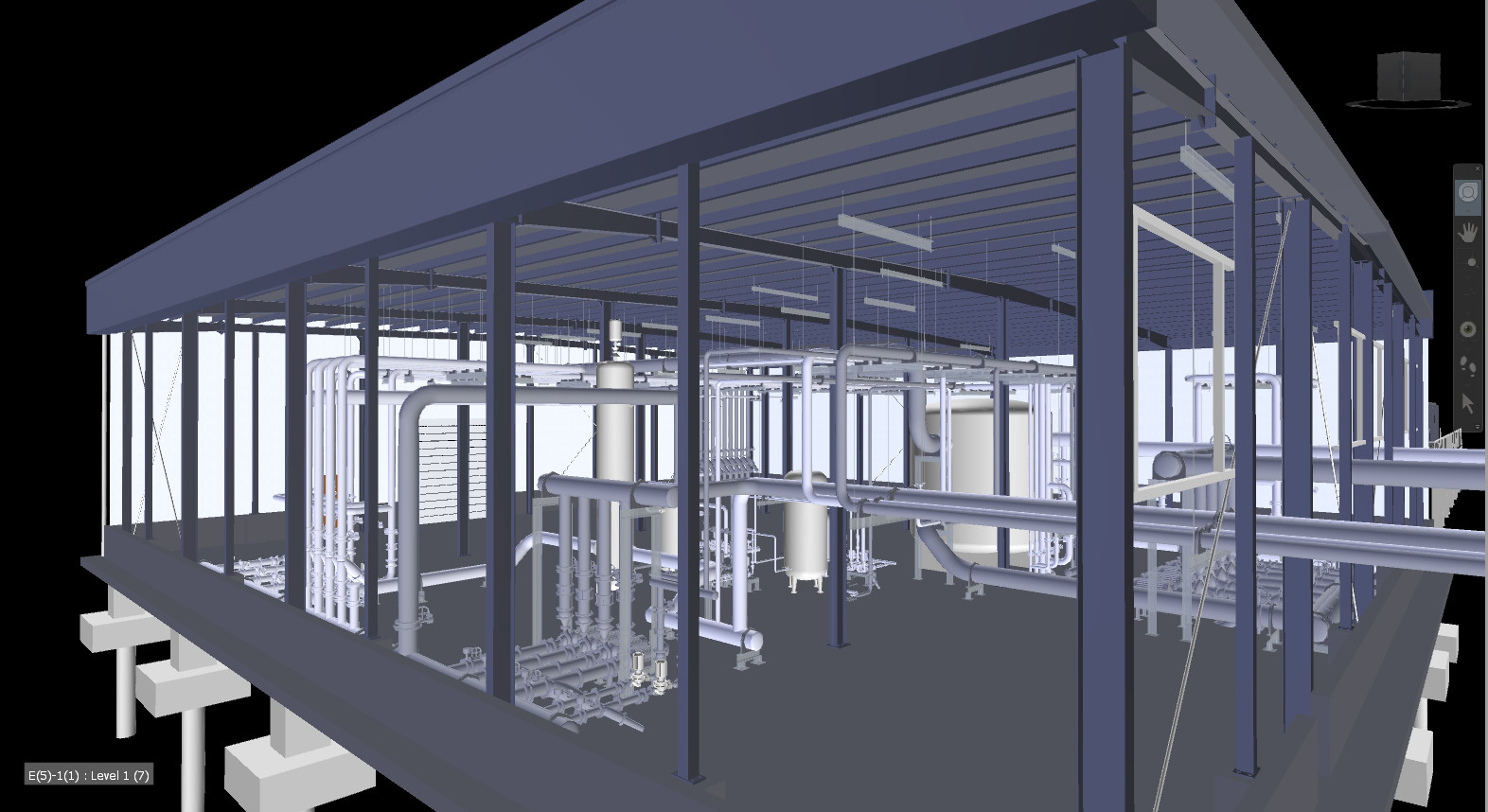How MEP Engineering and Building Information Modeling (BIM) Can Reduce Costs and Drive Sustainability in Building Projects
Owning and managing a building in a bustling metropolis like Ho Chi Minh City can be an expensive and complex endeavor. Between the significant upfront investment and the ongoing costs of operations and maintenance, building owners need to make strategic decisions to keep expenses in check. One of the most effective ways to achieve cost savings is through the use of Building Information Modeling (BIM), particularly when it comes to Mechanical, Electrical, and Plumbing (MEP) systems.
BIM is not just a technological trend; it’s a powerful tool that brings both efficiency and sustainability into the design, construction, and operation phases of a building’s lifecycle. Let’s explore how MEP engineering, paired with BIM tools, can drastically reduce costs and contribute to long-term sustainability.

Photos: BIM Modelling for Chiller Technical Room.
Faster MEP Design Process
The MEP design process requires high coordination among multiple teams, and traditionally, this often leads to conflicts during construction. With BIM, however, engineers can work together on a virtual model of the building, which allows for real-time detection of potential conflicts in equipment placement and system layout. This eliminates costly change orders during construction and significantly speeds up the design phase, reducing both time and cost.
Revit MEP—one of the most widely used BIM tools—helps streamline the design by automatically generating material lists, thus reducing the hours spent on manual calculations. Additionally, when engineers use BIM, design errors are caught earlier in the process, which reduces the risk of delays or additional expenses caused by having to fix issues on-site. This leads to smoother project approvals, which is crucial in cities like New York where the regulatory approval process can be lengthy.
Minimizing Change Orders During Construction
Change orders—unforeseen modifications to the initial plan—are a major cost driver in construction projects. BIM helps minimize change orders by allowing engineers to test different scenarios in a virtual space. When modifications need to be made, they are performed on the virtual model rather than on the physical building. This makes changes faster and more cost-effective, ensuring that the project remains on track both financially and schedule-wise.
Additionally, BIM software can simulate construction processes and cash flows, helping project managers track budget discrepancies and stay on top of costs in real time.



Photos: BIM Modelling for Chiller Technical Room.
Simplified Maintenance and Reduced Costs
BIM’s benefits don’t stop once construction is completed. In fact, its role in the building lifecycle continues well into facility management. By maintaining a virtual model of the building, facility managers can track the condition of MEP systems, plan for routine maintenance, and schedule replacements for aging components before they fail.
Preventive maintenance becomes much easier with BIM as it allows managers to have a comprehensive view of the building’s infrastructure and systems. This reduces the need for reactive repairs, which are often more costly and disruptive. Even for existing buildings, BIM can be used to create a model of the current condition, making it easier to manage and maintain older properties.
Advancing Sustainability Through BIM
BIM not only enhances cost efficiency but also facilitates sustainable building practices. Let’s take a look at some of the ways BIM helps create more sustainable buildings:
1. Energy Analysis
BIM tools like Revit can be integrated with energy analysis software, such as Green Building Studio, to simulate energy performance. By evaluating various energy-saving options early in the design process, designers can optimize the building’s energy efficiency and reduce long-term utility costs.
2. Daylighting
Effective daylighting reduces the need for artificial lighting, lowering energy consumption. BIM tools help design daylighting strategies that take into account the building’s location, orientation, and interior layout. This can improve occupant comfort and reduce electrical loads.
3. Improved Facility Management
With BIM, facility managers can access real-time data about the building’s systems, improving maintenance efficiency and extending the lifespan of equipment. BIM can also be integrated with computer-aided facility management systems (CAFM) to provide a comprehensive view of building performance.
4. Design Optimization
BIM allows designers to experiment with multiple design options and track their sustainability goals. This includes selecting materials with lower environmental impacts and optimizing the integration of various systems (HVAC, lighting, plumbing) for better energy performance.
5. Material Management and Waste Reduction
The accuracy of BIM in calculating material quantities ensures that the right amount of materials is used, reducing waste on construction sites. This not only saves money but also lowers the environmental impact of the construction process.
6. Retro-Commissioning and Renovations
BIM isn’t limited to new construction. It can also be applied in retro-commissioning and renovation projects, helping to assess the impact of new designs and materials on older buildings. This can improve the energy efficiency of existing buildings, helping them to achieve more sustainable certifications.
Conclusion
Integrating MEP engineering with BIM software offers substantial benefits for building projects. From reducing costs during the design and construction phases to improving long-term sustainability and maintenance, BIM transforms how buildings are created, operated, and maintained. It’s an investment in both efficiency and sustainability, ultimately leading to more cost-effective building ownership.
Whether you’re planning a new construction project or managing an existing property, Reecons Engineering can help you leverage BIM to optimize your MEP systems and create smarter, more sustainable buildings. Contact us today to learn how we can assist you in your next project.